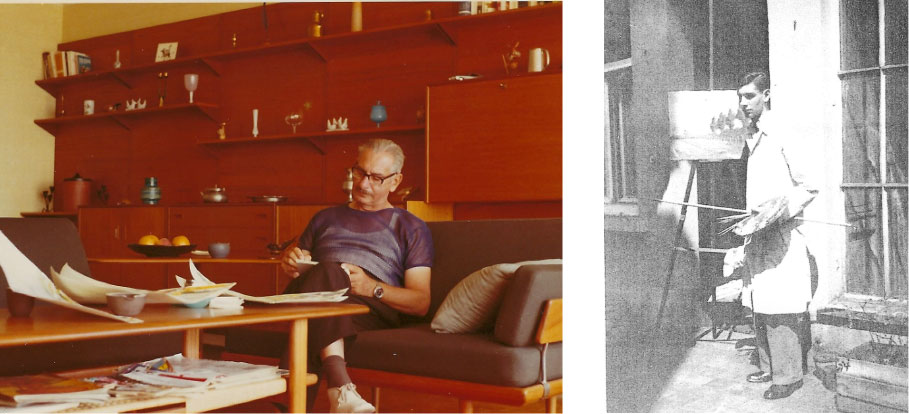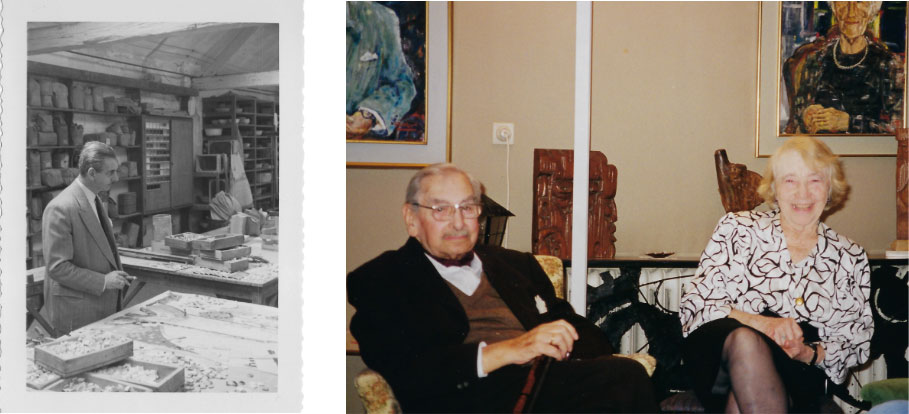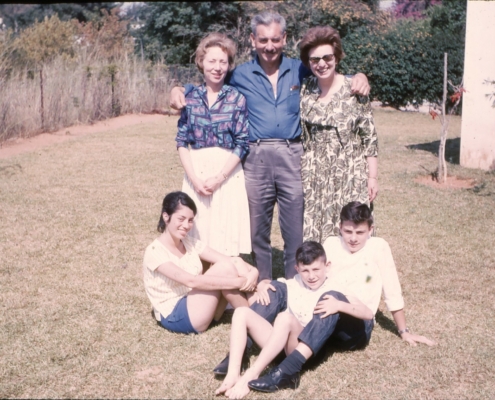The painter Adolphe (Eddy) Zucker was born in Antwerp, Belgium in 1912. During his high school years Eddy studied painting at the Academy of Arts and showed great talent. When he graduated high school, due to the worldwide economic crisis Eddy was forced to give up university studies. Nevertheless, he continued to study at the Academy of Arts. There, in addition to painting, sculpting and engraving he studied the art of stained glass as it was practiced for hundreds of years in European churches and monasteries.
At the age of 18 Eddy was enlisted into the Belgian army where he served in the artillery. In 1938 he was recalled into the army as an artillery reservist. In May 1940 he fought the Germans along the Albert canal and following the Belgian capitulation attempted to get evacuated through Dunkirk but after being unable to board a ship he returned home to Antwerp. Once back home, Eddy found a job at the restoration project of stained glass windows of a church but he was arrested for incitement against the occupation. He managed to escape with the help of the prison chaplain, and after a very arduous journey through France and Spain arrived at Portugal where he contacted the British embassy and reunited with his youngest brother, Jack.
The two brothers embarked on a Royal Navy ship that was headed to the UK with a group of French refugees, but it was rerouted to join the hunt for the battleship Bismarck in the southern Atlantic Ocean, and following its sinking, the whole group of refugees was told to disembark when they docked in West Africa for refueling. There the two Zucker brothers met a Belgian officer that helped them contact the authorities of Congo, where they both joined the Belgian Colonial Forces Jack as a physician and Eddy as a senior NCO in a motorized reconnaissance unit.
During 1942 the Belgian Colonial Forces were sent northwards to Egypt where they arrived just in time to participate in the tail end of the battle of El Alamein, and in 1943 they were transferred to Israel (Palestine) where they camped until the end of 1944.
In Israel Eddy met his future wife, Leah Jacobson, the scion of the Levontin and Jacobson families that were among the founding families of Rehovot and Rishon LeZion. They got married in 1944. Eddy continued to serve in the Belgian Colonial Forces until the end of the war. All through his army years Eddy never stopped painting and even exhibited his paintings on a few occasions in Alexandria, Jerusalem and Elisabethville.
Shortly after the end of the war Eddy was demobilized and returned to Israel. During the war of independence he served as an officer in the Israeli corps of engineers as an expert in camouflage.
In 1952 Eddy returned to Belgium with his family. They lived in Antwerp for eight years during which he made a living in the diamond trade but continued his artistic work. Some notable projects he made during these years for the local Jewish community are the recreation of the stained glass panels in the great synagogue of Antwerp and the design of a ceramic wall painting at the Jewish school Tachkemoni.
During his stay in Belgium Eddy exposed his works in two expositions one in Antwerp and one in Brussels.
At the end of 1960 the Zucker family returned to Israel and settled in Rehovot. Eddy joined the citrus growing enterprise of his in-laws but did not neglect his artistic work – painting, engraving, sculpting in wood and iron, stained glass windows, etc. He volunteered a few projects to the city such as a glass wall at Beit Yad Lebanim Rehovot, the Memorial for the dead soldiers and a sculpture in the plaza in front of City Hall that incorporated the original brass bell that was used by the founders of Rehovot to sound alarms in the early days, as well as stained glass windows both for a synagogue and for a day center for the elderly.
Eddy continued his artistic endeavours until he passed away in 2001. His works reflect his broad affinity of Jewish as well as European mythology, history, music, literature and poetry.




